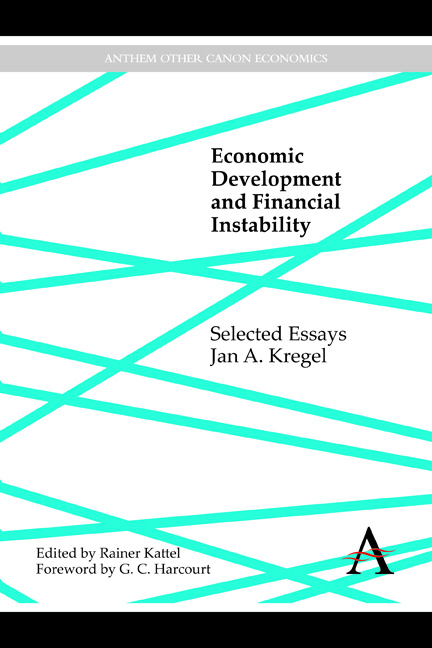Book contents
- Frontmatter
- Contents
- Foreword
- Publication History
- I Theoretical Discussions
- II Finance for Development
- 9 East Asia Is Not Mexico: The Difference between Balance of Payments Crises and Debt Deflations
- 10 Yes, “IT” Happened Again: The Minsky Crisis in Asia
- 11 Financial Liberalization and Domestic Policy Space: Theory and Practice with Reference to Latin America
- 12 Derivatives and Global Capital Flows: Applications to Asia
- 13 Was There an Alternative to the Brazilian Crisis?
- 14 An Alternative View of the Argentine Crisis: Structural Flaws in Structural Adjustment Policy
- 15 The Discrete Charm of the Washington Consensus
- III The Crisis in the US and the EU
- Index
13 - Was There an Alternative to the Brazilian Crisis?
from II - Finance for Development
Published online by Cambridge University Press: 05 November 2014
- Frontmatter
- Contents
- Foreword
- Publication History
- I Theoretical Discussions
- II Finance for Development
- 9 East Asia Is Not Mexico: The Difference between Balance of Payments Crises and Debt Deflations
- 10 Yes, “IT” Happened Again: The Minsky Crisis in Asia
- 11 Financial Liberalization and Domestic Policy Space: Theory and Practice with Reference to Latin America
- 12 Derivatives and Global Capital Flows: Applications to Asia
- 13 Was There an Alternative to the Brazilian Crisis?
- 14 An Alternative View of the Argentine Crisis: Structural Flaws in Structural Adjustment Policy
- 15 The Discrete Charm of the Washington Consensus
- III The Crisis in the US and the EU
- Index
Summary
I. Introduction
There are two basic approaches that can be taken to provide alternative views about how the global trade, production and financial system can be made more stable. One is based on the presumption, frequently advanced by the US Treasury, that the global allocation of capital is both efficient and stable when capital is free to seek the highest available returns without impediment or administrative restriction. If the system is unstable it is because countries are insufficiently prepared, their economic institutions are not sufficiently robust, or because their domestic policy choices are incoherent and contradictory. The solution that is proposed is to strengthen the economic institutions and to ensure sustainable and coherent macroeconomic policies.
The second approach is that there are systemic, endogenously generated instabilities in an economic system based on free goods and capital markets which cannot be remedied by means of micro solutions, such as writing better debt contracts or providing better regulation and supervision of financial institutions. This is the position adopted in this chapter. It argues that the financial crises that have taken place since the late 1970s are systemic, and as such can be expected to continue. Making the system more stable means changing its basis in free, unhindered flows of capital across countries.
- Type
- Chapter
- Information
- Economic Development and Financial InstabilitySelected Essays, pp. 199 - 214Publisher: Anthem PressPrint publication year: 2014

